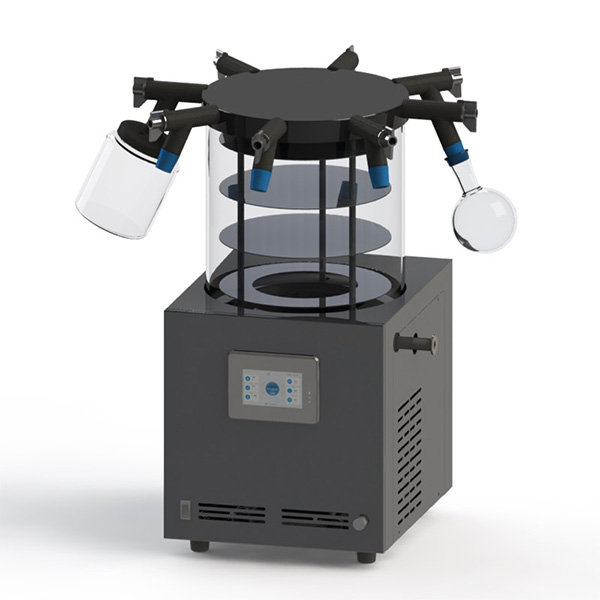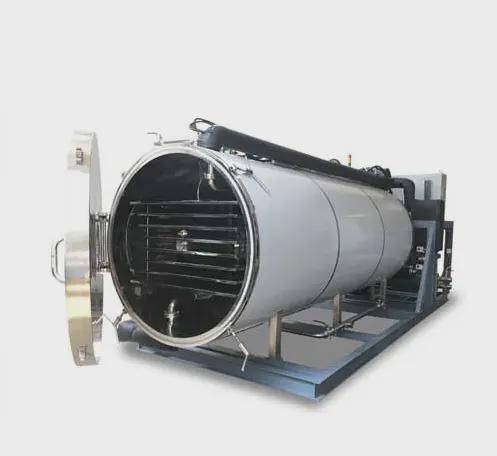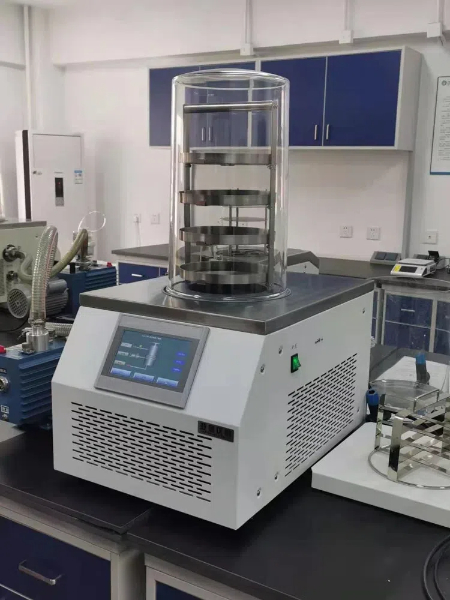
Content Menu
● Introduction to Freeze Drying
● Understanding the Freeze Drying Process
● The Rise of Home Freeze Dryers
>> Benefits of Owning a Home Freeze Dryer
● Choosing the Right Freeze Dry Food Machine
>> Capacity
>> Energy Efficiency
>> Ease of Use
>> Durability and Warranty
● The Science Behind Vacuum Freeze Drying Technology
>> Key Components of a Freeze Dryer
● Freeze Dried Food Benefits
>> Nutritional Retention
>> Flavor Preservation
>> Lightweight and Portable
>> Allergen-Free Options
● Exploring Freeze Dried Fruits and Vegetables
>> Popular Freeze Dried Fruits
>> Versatile Freeze Dried Vegetables
● Commercial Freeze Dryers vs. Home Units
>> Commercial Freeze Dryers
>> Home Freeze Dryers
● Freeze Drying vs. Dehydration: Understanding the Differences
>> Freeze Drying
>> Dehydration
● Tips for Successful Freeze Drying at Home
● The Future of Freeze Drying Technology
● Conclusion
● Frequently Asked Questions
>> Q1: How long does the freeze drying process take?
>> Q2: Can all foods be freeze dried?
>> Q3: How long do freeze dried foods last?
>> Q4: Is freeze drying food at home cost-effective?
>> Q5: How do you rehydrate freeze dried food?
Introduction to Freeze Drying
Freeze drying, also known as lyophilization, is a sophisticated preservation method that has revolutionized the way we store and consume food. This process involves removing moisture from food while preserving its structure, flavor, and nutritional content. At the heart of this innovative technique lies the freeze dry food machine, a remarkable piece of technology that has made its way from industrial settings into home kitchens.
Understanding the Freeze Drying Process
The food freeze drying process is a marvel of modern science, utilizing the principles of sublimation to transform frozen water directly into vapor, bypassing the liquid phase entirely. This unique approach allows for the preservation of food without the structural damage often associated with traditional drying methods.
The process typically involves three main stages:
1. Freezing: The food is rapidly frozen to temperatures below -40°F (-40°C).
2. Primary Drying: The surrounding pressure is lowered, and heat is gently applied to encourage sublimation.
3. Secondary Drying: Any remaining bound water is removed through desorption.
The Rise of Home Freeze Dryers
While freeze drying was once limited to large-scale industrial operations, the technology has now been scaled down for home use. The best freeze dryer for home use offers individuals the ability to preserve a wide variety of foods with professional-grade results. These machines have become increasingly popular among food enthusiasts, preppers, and health-conscious consumers alike.

Benefits of Owning a Home Freeze Dryer
1. Long-term food storage
2. Preservation of nutritional value
3. Retention of original flavor and texture
4. Reduction of food waste
5. Customization of preserved foods
Choosing the Right Freeze Dry Food Machine
Selecting the ideal freeze drying equipment for your needs requires careful consideration of several factors:
Capacity
Home freeze dryers come in various sizes, typically ranging from small units that can process 4-6 pounds of food per batch to larger models capable of handling up to 10 pounds or more. Consider your intended usage and storage space when selecting the appropriate size.
Energy Efficiency
Look for models with energy-efficient features, as freeze drying can be an energy-intensive process. Some units offer programmable cycles to optimize power consumption.
Ease of Use
User-friendly interfaces and automated cycles can greatly simplify the freeze drying process for home users. Look for machines with clear displays and intuitive controls.
Durability and Warranty
Invest in a well-built machine from a reputable manufacturer. A solid warranty can provide peace of mind for this significant investment.
The Science Behind Vacuum Freeze Drying Technology
Vacuum freeze drying technology is the cornerstone of modern freeze drying machines. This sophisticated process leverages the relationship between pressure and temperature to facilitate the sublimation of ice crystals within the food.
Key Components of a Freeze Dryer
1. Vacuum Chamber: Where the food is placed for processing
2. Condenser: Collects the water vapor removed from the food
3. Vacuum Pump: Creates and maintains the low-pressure environment
4. Heating Elements: Provide controlled heat to drive sublimation
5. Control System: Monitors and adjusts process parameters

Freeze Dried Food Benefits
The advantages of freeze dried foods extend far beyond their impressive shelf life:
Nutritional Retention
Unlike other preservation methods, freeze drying retains up to 97% of the food's original nutritional value. This makes it an excellent choice for health-conscious individuals looking to maintain a nutrient-rich diet.
Flavor Preservation
The low-temperature process preserves the natural flavors of foods, resulting in products that taste remarkably similar to their fresh counterparts when rehydrated.
Lightweight and Portable
With up to 99% of moisture removed, freeze dried foods are incredibly lightweight, making them ideal for camping, hiking, and emergency preparedness kits.
Allergen-Free Options
Freeze drying allows for the creation of allergen-free food products without the need for artificial preservatives or additives.
Exploring Freeze Dried Fruits and Vegetables
Among the most popular items to freeze dry are fruits and vegetables. These products offer a convenient way to enjoy seasonal produce year-round while retaining much of their nutritional value.
Popular Freeze Dried Fruits
1. Strawberries
2. Bananas
3. Blueberries
4. Mangoes
5. Apples
Versatile Freeze Dried Vegetables
1. Peas
2. Corn
3. Bell Peppers
4. Carrots
5. Onions
These freeze dried fruits and vegetables can be enjoyed as snacks, added to trail mixes, or rehydrated for use in cooking and baking.

Commercial Freeze Dryers vs. Home Units
While commercial freeze dryers and home units operate on the same principles, there are significant differences in scale, capacity, and features:
Commercial Freeze Dryers
- Large capacity (often 100+ pounds per cycle)
- Higher initial investment
- More complex operation requiring trained personnel
- Faster processing times
- Suitable for industrial-scale production
Home Freeze Dryers
- Smaller capacity (typically 4-10 pounds per cycle)
- More affordable for individual users
- User-friendly design for non-experts
- Longer processing times
- Ideal for personal use and small-batch production
Freeze Drying vs. Dehydration: Understanding the Differences
While both freeze drying and dehydration remove moisture from food, the processes and results differ significantly:
Freeze Drying
- Removes up to 99% of moisture
- Preserves original shape and texture
- Retains most nutrients and flavors
- Longer shelf life (up to 25 years)
- More energy-intensive process
Dehydration
- Removes 90-95% of moisture
- May alter food texture and appearance
- Some nutrient loss, especially vitamins A and C
- Shorter shelf life (1-5 years)
- Less energy-intensive, faster process
Tips for Successful Freeze Drying at Home
To get the most out of your home freeze dryer, consider the following tips:
1. Pre-freeze foods before placing them in the freeze dryer to reduce overall processing time.
2. Cut foods into uniform sizes for even drying.
3. Avoid overloading trays to ensure proper air circulation.
4. Experiment with different foods to discover what works best.
5. Store freeze dried foods in airtight containers with oxygen absorbers for maximum shelf life.
The Future of Freeze Drying Technology
As interest in food preservation continues to grow, we can expect to see further advancements in freeze drying technology:
- More energy-efficient models
- Increased automation and smart features
- Compact designs for smaller kitchens
- Integration with smart home systems
- Improved rehydration techniques
Conclusion
Freeze dry food machines have opened up a world of possibilities for home food preservation. By understanding the process, benefits, and best practices of freeze drying, you can make informed decisions about incorporating this technology into your lifestyle. Whether you're looking to extend the life of your garden's harvest, prepare for emergencies, or simply enjoy nutritious snacks, a home freeze dryer can be a valuable addition to your kitchen arsenal.
Frequently Asked Questions
Q1: How long does the freeze drying process take?
A: The freeze drying process typically takes between 20 to 40 hours, depending on the food type, quantity, and moisture content. Fruits and vegetables with high water content may take longer, while items like lean meats might process more quickly.
Q2: Can all foods be freeze dried?
A: While most foods can be freeze dried, some are better suited to the process than others. Foods with high fat content, such as avocados or fatty meats, may not freeze dry well and can have a shorter shelf life. Foods with high sugar content, like jams or syrups, may also be challenging to freeze dry effectively.
Q3: How long do freeze dried foods last?
A: Properly packaged freeze dried foods can last up to 25 years when stored in optimal conditions. This includes storage in airtight containers with oxygen absorbers, kept in a cool, dry place away from direct sunlight.
Q4: Is freeze drying food at home cost-effective?
A: While the initial investment in a home freeze dryer can be significant, it can become cost-effective over time, especially for those who frequently purchase commercially freeze dried foods or have access to bulk produce. The ability to preserve food that might otherwise go to waste can also contribute to long-term savings.
Q5: How do you rehydrate freeze dried food?
A: Rehydrating freeze dried food is typically a simple process. For most items, you can add room temperature or warm water until the food reaches its original consistency. The amount of water and time required will vary depending on the food type. Some freeze dried foods, like fruits, can be enjoyed without rehydration as crispy snacks.












